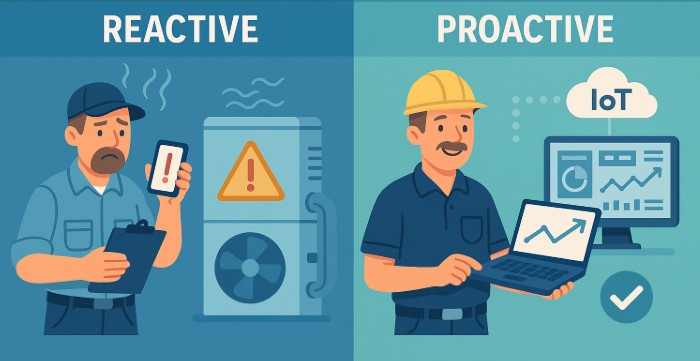Are You Missing These Hidden Compliance Risks in Your Facility?
Healthcare compliance is high-stakes. It’s not just about passing inspections—it’s about protecting lives. Yet, many facilities still rely on manual checks and periodic reviews, leaving critical gaps that could lead to life-threatening oversights.
👉 Ask yourself:
- Are we still using paper-based logs or spreadsheets for compliance?
- How quickly do we know if something goes wrong in an OR or ICU?
- Do you know about environmental changes by non-facility personnel?
If you’re relying on reactive systems, you’re playing catch-up in an environment that demands precision 24/7.
Why Environmental Monitoring Isn’t Optional Anymore
From surgical suites to sterilization rooms, even minor fluctuations in temperature, humidity, or airflow can lead to infection risks, compromised compounding medications, or invalid lab results.
👉 Reflect on this:
- Do we know, in real time, if HVAC systems are outside safe ranges?
- What’s our response time when an environmental parameter fails?
Real-time monitoring systems provide immediate alerts so teams can act before safety thresholds are breached—protecting patients and avoiding regulatory penalties.
Prevent Equipment Failures Before They Happen
Chiller Water Systems, HVAC, boilers for sterilization—these systems can’t fail. But traditional scheduled maintenance leaves you vulnerable to surprise breakdowns and reportable events.
👉 Consider this:
- What is the cost of OR being down due to an HVAC issue?
- Are we waiting for failures before fixing equipment?
- What is the impact when one of these systems, like a sterilization boiler, fails?
Predictive analytics help identify problems before they cause downtime—supporting smoother operations and better inspection outcomes.
Turn Data into Smart Decisions
Most facilities collect loads of performance data—but it’s often too late to act on. What’s needed is real-time visibility and analytics that surface insights instantly.
👉 Ask your team:
- Are we reacting to yesterday’s problems today?
- How much could we improve with real-time dashboards?
- Do you know the impact of what items require deferral for maintenance?
- Do you know if your building management system gives you the flexibility to find the root cause of problems?
With modern platforms, facility teams can optimize staff schedules, plan budgets, and reduce emergency fixes, all while maintaining compliance.
Easy Integration, No Disruption
Many fear that upgrading monitoring systems will overwhelm IT or disrupt patient care. Fortunately, today’s cloud-based solutions connect seamlessly with existing infrastructure—building automation systems, sensors, even manual logs.
👉 Think about this:
- Are we delaying tech upgrades due to complexity fears?
- Do you perform your IT maintenance that consumes a lot of time?
- Do you juggle multiple systems to get the same information?
Modern platforms offer secure, remote access while minimizing on-site hardware and strain on your team.
Make Compliance a Strategic Advantage
Intelligent alerting, automated documentation, and advanced analytics do more than ensure compliance—they turn it into a knowledge edge.
👉 One last question:
- What would change if we could anticipate 80% of compliance issues before they happened?
With FacilityConneX, your facility can shift from reactive to proactive—protecting patients, ensuring compliance, and streamlining operations.
✅ Ready to Modernize Your Facility’s Compliance?
Don’t wait for the next inspection to reveal hidden issues. Partner with experts who understand the unique challenges of healthcare facilities.
Whether you’re facing frequent equipment failures, compliance gaps, or need to upgrade your monitoring capabilities—FacilityConneX can help you identify, prioritize, and solve problems before they become risks. Want help choosing the right system, or need a second opinion on your current setup? We’re just a message away. Contact FacilityConneX at info@facilityconnex.com to learn how secure cloud-based solutions can provide complete data visibility without operational disruption.

